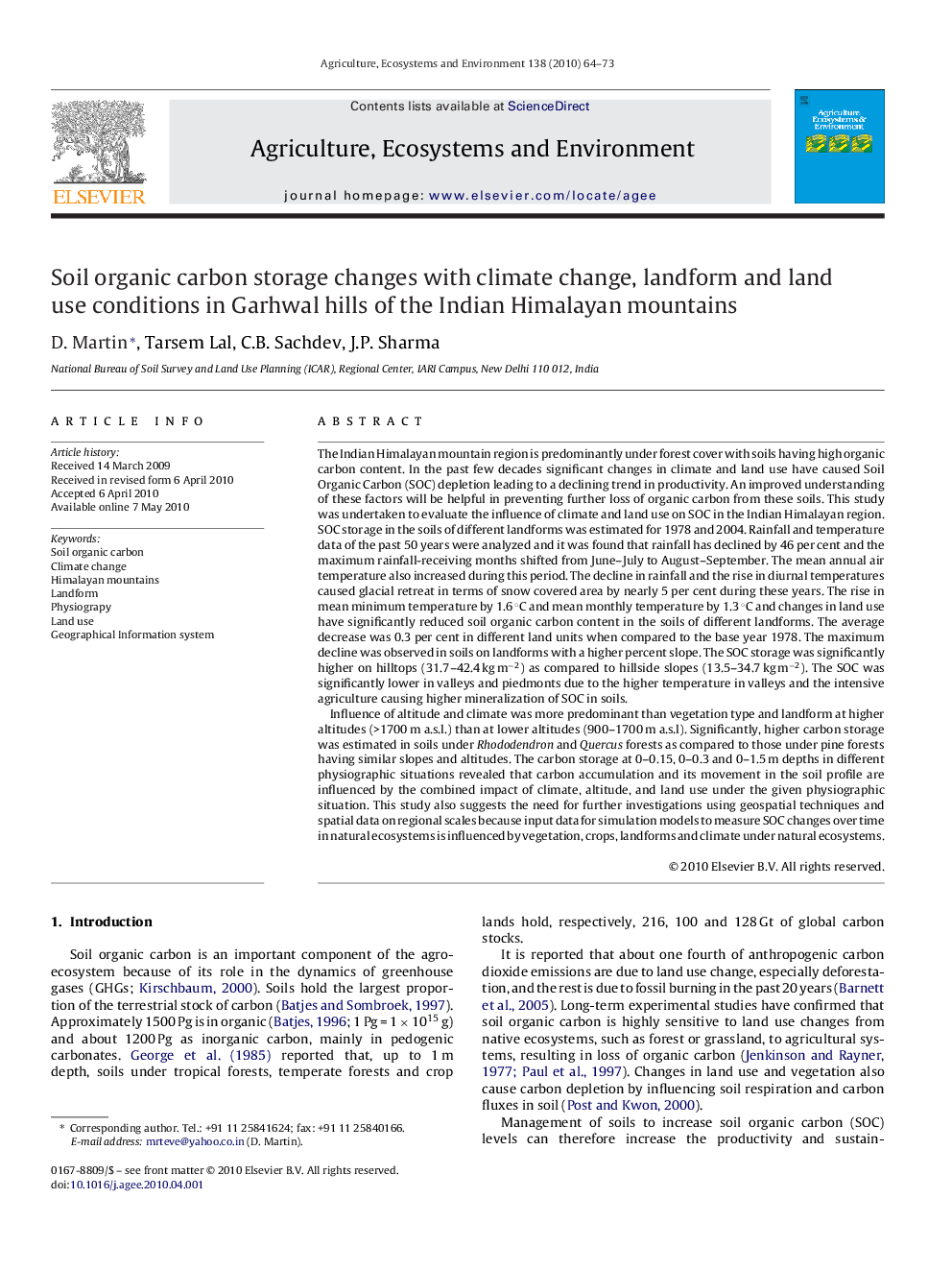| کد مقاله | کد نشریه | سال انتشار | مقاله انگلیسی | نسخه تمام متن |
|---|---|---|---|---|
| 2414873 | 1552114 | 2010 | 10 صفحه PDF | دانلود رایگان |

The Indian Himalayan mountain region is predominantly under forest cover with soils having high organic carbon content. In the past few decades significant changes in climate and land use have caused Soil Organic Carbon (SOC) depletion leading to a declining trend in productivity. An improved understanding of these factors will be helpful in preventing further loss of organic carbon from these soils. This study was undertaken to evaluate the influence of climate and land use on SOC in the Indian Himalayan region. SOC storage in the soils of different landforms was estimated for 1978 and 2004. Rainfall and temperature data of the past 50 years were analyzed and it was found that rainfall has declined by 46 per cent and the maximum rainfall-receiving months shifted from June–July to August–September. The mean annual air temperature also increased during this period. The decline in rainfall and the rise in diurnal temperatures caused glacial retreat in terms of snow covered area by nearly 5 per cent during these years. The rise in mean minimum temperature by 1.6 °C and mean monthly temperature by 1.3 °C and changes in land use have significantly reduced soil organic carbon content in the soils of different landforms. The average decrease was 0.3 per cent in different land units when compared to the base year 1978. The maximum decline was observed in soils on landforms with a higher percent slope. The SOC storage was significantly higher on hilltops (31.7–42.4 kg m−2) as compared to hillside slopes (13.5–34.7 kg m−2). The SOC was significantly lower in valleys and piedmonts due to the higher temperature in valleys and the intensive agriculture causing higher mineralization of SOC in soils.Influence of altitude and climate was more predominant than vegetation type and landform at higher altitudes (>1700 m a.s.l.) than at lower altitudes (900–1700 m a.s.l). Significantly, higher carbon storage was estimated in soils under Rhododendron and Quercus forests as compared to those under pine forests having similar slopes and altitudes. The carbon storage at 0–0.15, 0–0.3 and 0–1.5 m depths in different physiographic situations revealed that carbon accumulation and its movement in the soil profile are influenced by the combined impact of climate, altitude, and land use under the given physiographic situation. This study also suggests the need for further investigations using geospatial techniques and spatial data on regional scales because input data for simulation models to measure SOC changes over time in natural ecosystems is influenced by vegetation, crops, landforms and climate under natural ecosystems.
Journal: Agriculture, Ecosystems & Environment - Volume 138, Issues 1–2, 15 June 2010, Pages 64–73